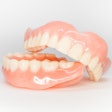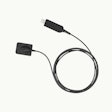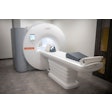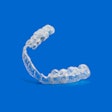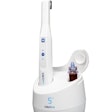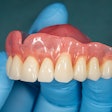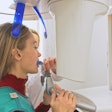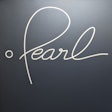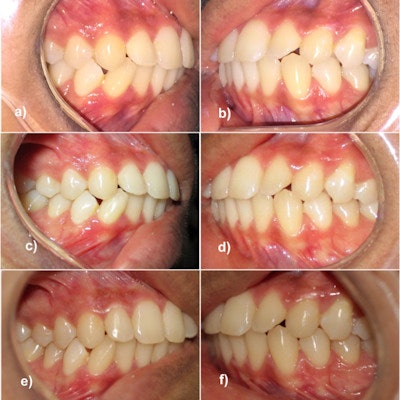
Digital single-lens reflector (DSLR), point-and-shoot, and smartphone cameras are frequently used in everyday life, but which one is most suitable for dental photography? Each camera's strengths -- and drawbacks -- were outlined in a study published April 7 in Heliyon.
In the head-to-head-to-head comparison, the point-and-shoot camera seemed to produce the most consistent quality results for pictures of dental casts and patient occlusion. Meanwhile, the mobile camera struggled with color accuracy all around.
"These observations highlight the need to calibrate the cameras and optimize the environmental conditions, which would probably reduce the variation in the image produced and improve image quality," wrote the authors, led by Dr. Santhosh Kumar, MDS, an associate professor in the department of periodontology, Manipal College of Dental Sciences in India (Heliyon, April 7, 2022).
Good images, good treatment
Quality, accurate photography is needed to meet diagnostic challenges in dentistry and to achieve effective treatment for patients. However, as technology changes, finding the right equipment to provide the best images remains challenging. The new study put popular, albeit somewhat dated, technology to the test for dental photography.
| Cameras and settings used in the study | |||
| DSLR | Point and shoot | Mobile | |
| Manufacturer/model | Canon EOS1300D with Canon EF 100 mm F/2.8 IS lens | Canon PowerShot ELPH 180 | Apple iPhone 6 |
| Release date | March 2016 | January 2016 | September 2014 |
| Flash used | Internal flash | Auto flash | True-tone flash |
| Mode used | Auto | Auto | Auto |
| Picture output | JPEG | JPEG | JPEG |
First, the researchers obtained photographs of dental plaster casts with class I occlusion and painted the casts with acrylic paint to mimic teeth, gingiva, and alveolar mucosa. The casts were then placed on a platform with a black background. Using each of the cameras, the team took 10 photographs per day for six consecutive days of the right and left posterior views, maxilla and mandible occlusal views, and frontal occlusion views.
 Image caption and attribution: Photos of five regions of a dental cast taken by the cameras, including the a) maxillary occlusal view, b) mandibular occlusal view, c) view in occlusion, d) right lateral view in occlusion, and e) left lateral view in occlusion. All images courtesy of Kumar et al. Licensed by CC BY 4.0.
Image caption and attribution: Photos of five regions of a dental cast taken by the cameras, including the a) maxillary occlusal view, b) mandibular occlusal view, c) view in occlusion, d) right lateral view in occlusion, and e) left lateral view in occlusion. All images courtesy of Kumar et al. Licensed by CC BY 4.0.Next, one author trained in dental photography and familiar with all three types of cameras took 192 photographs from 16 fully detentulous participants. The participants had an area of their mouth cleaned of debris and saliva. Then, with the aid of a cheek retractor, the researcher photographed the teeth in occlusion.
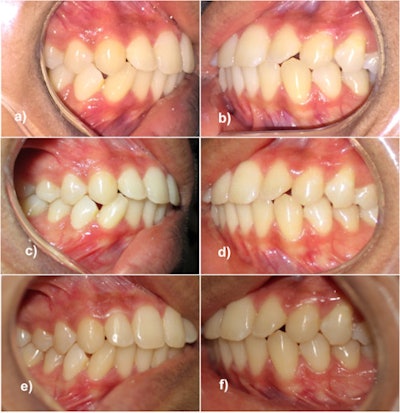 Intraoral photos of the left and the right lateral views of the teeth in occlusion. a) and b) were taken with a mobile phone, c) and d) were taken with a point-and-shoot camera, e) and f) were taken using a DSLR camera.
Intraoral photos of the left and the right lateral views of the teeth in occlusion. a) and b) were taken with a mobile phone, c) and d) were taken with a point-and-shoot camera, e) and f) were taken using a DSLR camera.Another author who did not know which type of camera was used to take the photos selected 32 photos per camera for the quality and color accuracy assessment. To evaluate quality, the researchers used the computer program no-reference matrix algorithm that has evaluation capacities like humans, according to the authors. They used a second program to analyze color accuracy.
For the dental cast photos, the analysis showed the mobile phone had worse picture quality than the point-and-shoot camera but not the DSLR. The mobile phone also produced lighter color scores than both the DSLR and point-and-shoot camera.
For the participant photos, the study found no difference in quality between the three cameras. However, color analysis revealed the mobile camera depicted brighter and more yellow shades than the DSLR and the point and shoot.
"We construe that the DSLR and the point and shoot cameras were equally suitable for intraoral picture quality," the authors wrote.
More to learn about picture quality
It's important to note that the models of cameras used in the study are now somewhat dated and that newer camera models, especially in mobile phones, may produce different results.
The study also used compressed JPEG images. While this type of file format is standard, it can compromise some image data, and analyzing the photos with a raw file format may have provided better quality and color accuracy, the authors noted.
The authors called for more studies, including ones that use ideal environment settings, to be completed.
Therefore, "examining the quality of dental photographs is integral to imparting value to oral health care," Kumar et al wrote.










